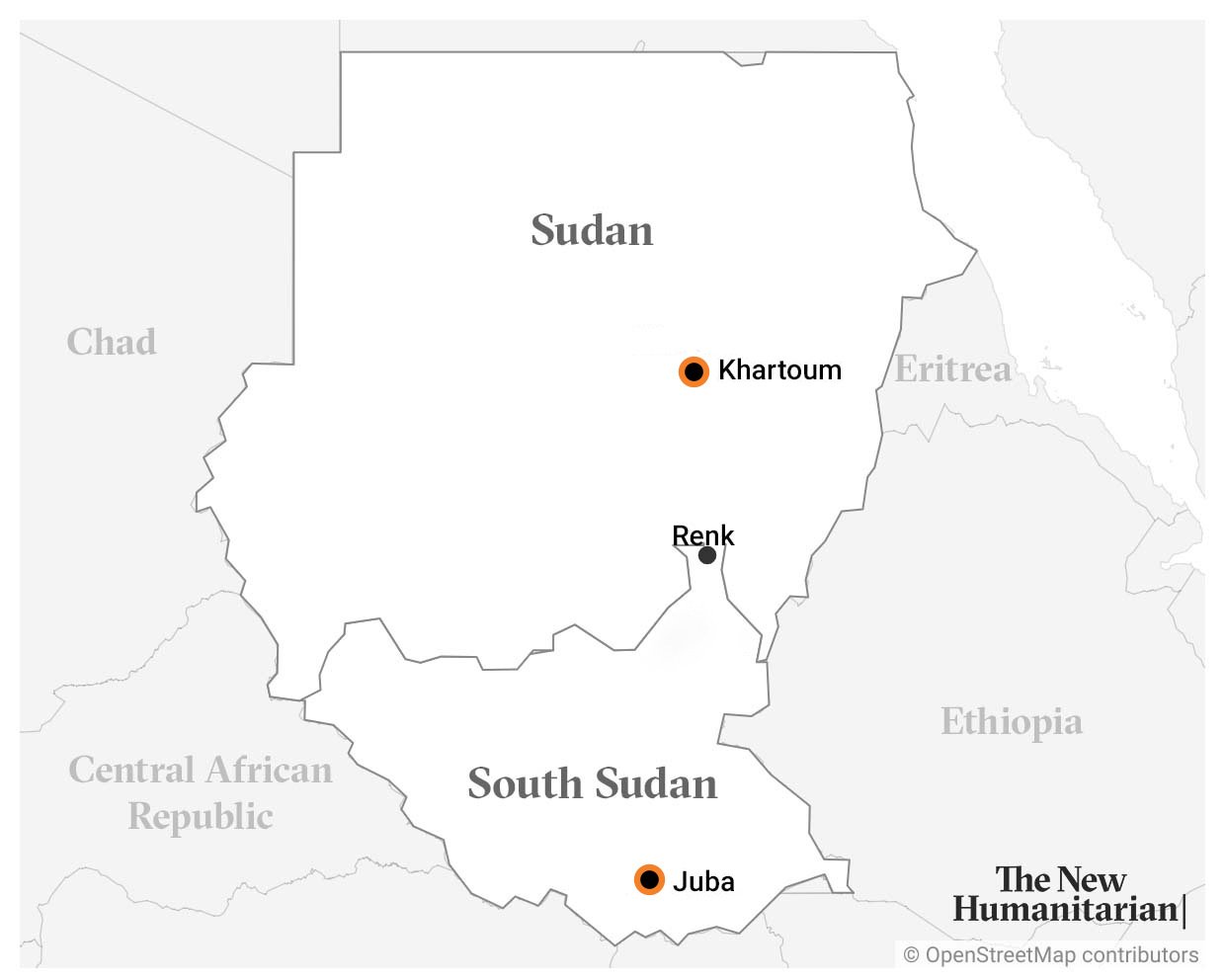A humanitarian tragedy is unfolding in the South Sudan border town of Renk, with more than 10,000 South Sudanese fleeing the conflict in Sudan trapped in deplorable conditions in a squalid “transit centre” because of the collective failures of their government, relief agencies, and aid donors.
These actors need to work together to urgently put an end to this deepening crisis. It is essential that funding be quickly mobilised to facilitate the onward movement of stranded returnees to their home states, and that adequate food and other essential services are provided for those remaining in Renk.
Most of these new arrivals are South Sudanese who sought refuge in Sudan years earlier to escape their own country’s civil war. Now, the most vulnerable among them, with few resources to call on, are stranded in Renk, on the eastern bank of the White Nile, waiting for help to return to their previous homes.

The transit centre, set up in an abandoned building, is bursting at the seams. It was designed to temporarily house 4,000 people. Currently, it hosts at least 12,000, and it is still expanding, with up to 1,500 people crossing into Renk each day.
Conditions are dire. There are not enough toilets, food rations, or other basics, including soap, mosquito nets, and women’s dignity kits. It is currently the rainy season, and the limited number of tents available quickly flood. The health consequences of the congestion are beginning to show. In June, an outbreak of highly contagious measles killed four children. With most people drawing their water from the White Nile, a breakout of waterborne diseases is almost inevitable.
Stuck in Renk
The returnees, who started arriving when Sudan’s civil war began in April, were supposed to stay for less than 72 hours in the transit centre. Those who can afford to have moved on. But many lost everything in Sudan and don’t have the means to travel further.
Over the past few months, the government and its UN partner, the International Organisation for Migration (IOM), have only managed to assist a few thousand people to head home due to a lack of funding and South Sudan’s lamentable road network. At the same time, there isn’t enough funding to hire a sufficient number of planes to airlift the returnees. That means a large number of people will likely remain stranded in Renk for months to come.
At the same time, South Sudan’s fragile transitional government in Juba has been unable to manage the cyclical violence and economic competition of a fractious political and military elite. There is palpable tension ahead of next year’s elections, and returning large numbers of people to their home areas – from which they had earlier fled because of ethnic violence – could aggravate the insecurity.
For those who are able to return, years of underdevelopment means there is an absence of schools, hospitals, and livelihood opportunities. The support to help them resettle is simply unavailable.
Meanwhile, the South Sudan government refuses to establish proper camps to house people longer term in Renk, where sufficient and better-coordinated humanitarian services could be provided. Instead, it wants people to move away from the border to areas where there are better transport links and infrastructure.
The de facto “no-camp” policy – driven in part by fear of creating permanent settlements on the border – is piling more misery on already deprived people who have struggled to escape Sudan’s bitter civil war.
The term “transit centre” creates the illusion of a short-term stay. But many people have been in “transit” for months now. Some have made harrowing journeys to get here, arriving with little more than the few possessions they could carry. An estimated 20% to 30% of those reaching Renk’s border crossing point have protection needs.
Their prolonged stay in deplorable conditions has stoked tensions. Last month, an aid worker – mistakenly believed to be responsible for organising transport out of Renk – was beaten up. Meanwhile, the flow of returnees, alongside the disruption to supply chains in Sudan that local merchants depend on, has triggered a surge in prices, affecting both townspeople and new arrivals.
Donors must do better
According to the UN refugee agency, UNHCR, there were over 800,000 South Sudanese refugees in Sudan, a quarter of whom were based in Khartoum, which has been the scene of some of the most bitter fighting between the Sudanese Army and the rival paramilitary Rapid Support Forces.
Around 190,000 South Sudanese have so far already managed to cross the border. But with no end in sight to Sudan’s civil war, many more people are expected to try and make the difficult journey south.
An estimated 9.4 million people – 76% of South Sudan’s population – are in need of aid. But the humanitarian response is severely underfunded. The country’s $1.7 billion aid programme is only 39% financed; a separate $566 million regional refugee response plan, launched in May to address the Sudanese crisis, has so far hit just 7% of its appeal target.
Donor fatigue is a reality, but the penny pinching punishes the victims of the crisis. Aid agencies need $26 million until the end of the year to ferry home the returnees stuck in Renk and to avoid a wider humanitarian disaster – it’s not a colossal amount.
At the same time, the government in Juba needs to relax its no-camp policy to allow aid workers to respond to people’s needs. Defining Renk as a transit centre, and therefore ruling out proper relief support, is short-sighted semantics.
People who have only just escaped a vicious war should be properly provided for. Failure to address the gaps in funding and assistance will worsen the plight of those whose lives have already been turned upside down.






